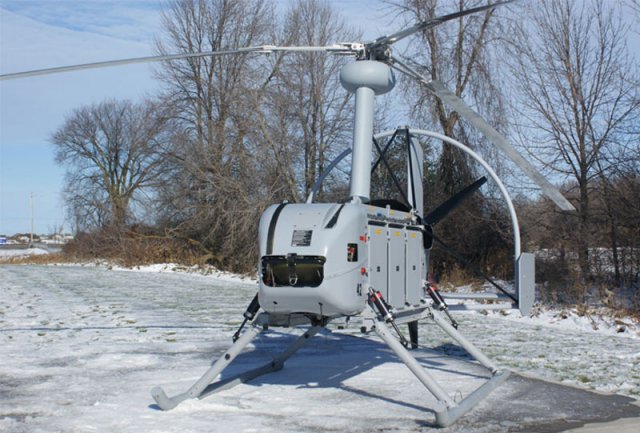U.S. SOCOM (Special Operations Command) has ordered a new version of the CQ-10 cargo delivery UAV. This model (CQ-10B) operates like a helicopter while the original CA-10A used a parafoil.
Also called the SnowGoose (it was developed by a Canadian firm, MMIST) this UAV doesn’t have wings and was designed to deliver cargo. The CQ-10A is launched from the back of a moving hummer, which has to speed down at least 300 meters of straight road (or flat ground) for the parafoil to deploy and lift the CA-10A into the air. The UAV lands by coming in low to a specific GPS location and cutting its motor off. CQ-10A can also be dropped from a cargo aircraft with a rear door. The CQ-10B operates like a helicopter.
The CQ-10A is a further development of the Sherpa cargo parachute system (that used GPS and mechanical controls to guide the direction of the descending parafoil for pinpoint landings). It took four years to develop the unpowered Sherpa system into a powered one that flies to designated GPS coordinates, drops cargo and returns. The CQ-10 can receive new GPS coordinates while in flight. The U.S. Army paid for much of the SnowGoose development, especially features that enable the UAV to perform recon, as well as supply, missions.
The CA-10A took that technology one step farther. Using a parafoil (a parachute that can be controlled in such a way that the user can gain altitude and travel over long distances), and a “cargo container” that contains a small propeller and engine, a unique type of UAV has been created. The SnowGoose is basically rectangular box (on skids) with a 115 horsepower engine, fuel supply, parafoil controls, and six cargo compartments (carrying up to 45 kg/100 pounds each). The CA-10A ejects the cargo containers when it is low and within 30 meters (100 feet) of the GPS coordinates it was programmed with. The CQ-10B can land for unloading.
Since 2005 SOCOM has bought at least 75 CQ-10As (at about $500,000 each) for use in Afghanistan, Iraq, and elsewhere. The CQ-10A has a range of 300 kilometers and a top speed of 61 kilometers an hour. The B version has a range of 600 kilometers and a top speed of 120 kilometers an hour. The CQ-10B costs $650,000 each and nearly $300 an hour to operate. The CQ-10B is seen as very useful for disaster relief operations and is being offered to organizations that handle emergency relief.
The SnowGoose can stay in the air for up to 20 hours, is guided by onboard GPS and mechanical flight controls operated by a special microcomputer. The Special Forces are using them for things like delivering supplies, or dropping psychological warfare leaflets. The UAV is particularly good for delivering supplies to long range patrols, units that need their stuff delivered discretely at night. The SnowGoose does this more effectively than a manned helicopter or a parachute drop.
Source: Strategy Page

